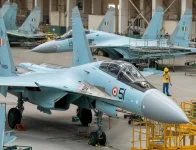- Views: 1K
- Replies: 1
Hindustan Aeronautics Limited (HAL) is making significant strides in developing its next-generation helicopters, the Indian Multi-Role Helicopter (IMRH) and its naval variant.
An official from the state-owned aerospace company indicated that HAL aims to seek final approval for the IMRH program from the Cabinet Committee on Security (CCS) by March 2026.
The CCS, chaired by the Prime Minister, is India's highest authority on defence procurement. This effort is part of a broader strategy to enhance India's self-reliance in critical military hardware.
🚁 The IMRH Replacement Plan
The IMRH is a medium-lift helicopter in the 13-tonne category, intended to replace the Indian Armed Forces' dependable but aging fleet of Mi-17 helicopters, which were sourced from Russia. According to the official, the project's design phase is steadily moving toward completion.The company is following a clear roadmap:
- If CCS approval is granted by March 2026, HAL plans to roll out the first prototype by 2028.
- This would be followed by intensive flight testing beginning in 2029.
- The goal is to achieve certification by 2031.
⚙️ Advanced Capabilities and Engine
The IMRH is designed to be a versatile platform capable of performing numerous roles, including troop transport, cargo logistics, combat search-and-rescue, and disaster relief operations.Key specifications include:
- Payload: Up to 5 tonnes of internal cargo.
- Range: An operational range exceeding 800 kilometers.
- Avionics: A modern "glass cockpit" (digital displays) and a fly-by-wire system, which uses electronic signals to control the aircraft, making it more stable and agile.
- Engine: A key element of its design is the new "Aravalli" turboshaft engine. This engine is being co-developed by HAL and Safran Helicopter Engines of France to ensure powerful all-weather operations, including in the challenging "hot-and-high" conditions found in the Himalayas.
⚓ Naval Variant Receives Internal Funding
In a parallel effort, HAL is also developing the Deck-Based Multi-Role Helicopter (DBMRH) for the Indian Navy. This variant is specifically designed for operations from India's aircraft carriers, such as the commissioned INS Vikrant and the planned INS Vishal.Highlighting its commitment, HAL has pledged to self-fund approximately 30% of the DBMRH's design and development costs from its own earnings, while awaiting government approval for the remaining 70%.
The DBMRH will share the IMRH's basic airframe but will include crucial modifications for maritime operations, such as automatic folding rotor blades (for storage on ships), corrosion-resistant materials, and reinforced landing gear for deck landings.
This naval version will be equipped for roles like anti-submarine warfare and anti-surface strikes.
By using its own funds to begin initial "long-lead activities," HAL aims to prevent common delays and accelerate the domestic manufacturing of advanced naval helicopters.



